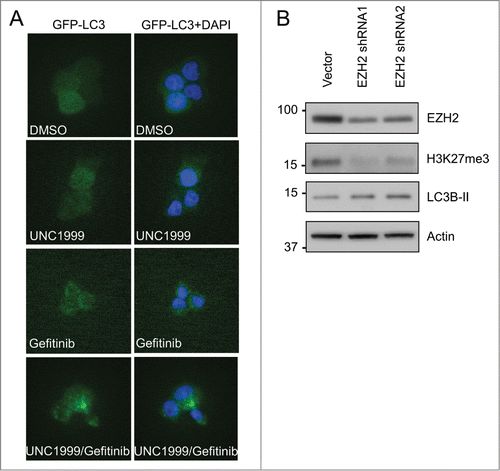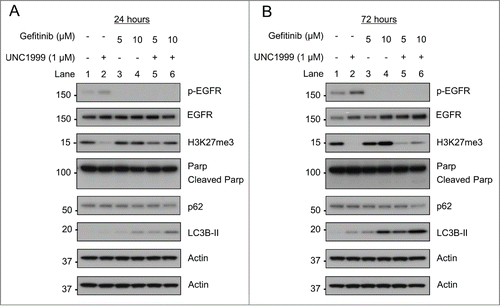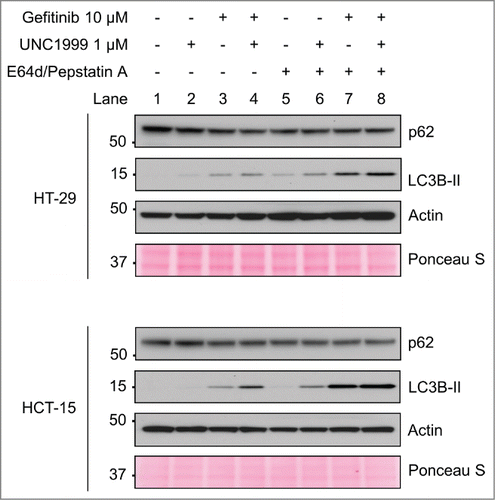Figures & data
Figure 1. EZH2 is over-expressed in colon cancer and can be inhibited by UNC1999 in HT-29 and HCT-15 cells. (A) TCGA database analysis comparing EZH2 expression in non-cancerous colonic epithelial samples compared to colon cancer samples. Log2-transformed, normalized counts are shown for EZH2, dividing the plot to separate normal and tumor samples. *P = 3.97E-41. (B) Structure of UNC1999. (C) Total H3K27me3 levels in HT-29 and HCT-15 cells treated with varying concentrations of UNC1999 for 72 hours.
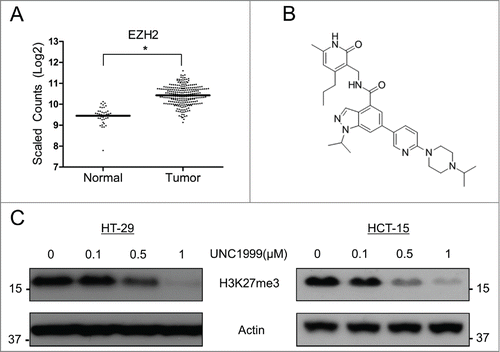
Figure 2. Gefitinib inhibits EGFR phosphorylation and increases autophagy in HT-29 cells and HCT-15 cells. Cells were treated with DMSO (control) or varying concentrations of gefitinib (0.1 μM, 0.5 μM, 1 μM, 5 μM, 10 μM) for 24 hours. (A) HT-29 cells. (B) HCT-15 cells.
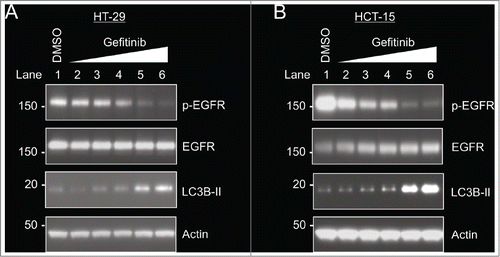
Figure 3. Together UNC1999 and gefitinib significantly reduces the number of HT-29 cells compared to either compound alone. (A–C) HT-29 cells treated with varying concentrations of UNC1999, gefitinib, or the combination of UNC1999 and gefitinib. MTS assay was performed to assess cell proliferation after 72 hours. (D) Manual cell counting of live cells after treatment for 72 hours with 1 μM UNC1999, 5 μM gefitinib, or the combination of 1 μM UNC1999 and 5 μM gefitinib. *P < 0.05. (E) Clonogenicity assay with crystal violet staining after 10 days of treatment with DMSO (Control), 0.5 μM UNC1999, 5 μM gefitinib, or 0.5 μM UNC1999 and 5 μM gefitinib.
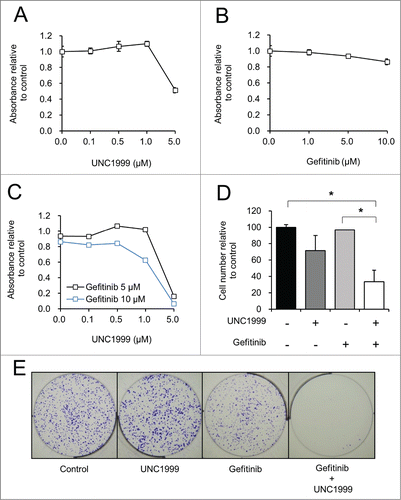
Figure 4. EZH2 shRNA decreases colony formation when combined with gefitinib. HT-29 cells were transfected with Vector or EZH2 shRNAs. (A) EZH2 RT-PCR after puromycin selection. EZH2 levels are relative to actin. (B) EZH2 western blotting after puromycin selection. (C) Clonogenicity assay with crystal violet staining after 10 days of treatment with DMSO (Control) or 5 μM gefitinib.
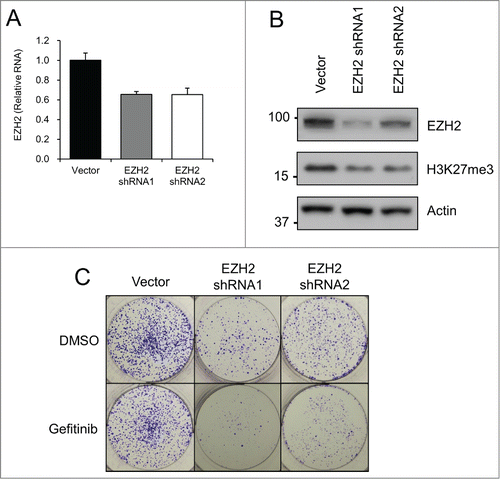
Figure 5. Together UNC1999 and gefitinib significantly reduces the number of HCT-15 cells compared to either compound alone. (A–C) HCT-15 cells treated with varying concentrations of UNC1999, gefitinib, or the combination of UNC1999 and gefitinib. MTS assay was performed to assess cell proliferation after 72 hours. (D) Manual cell counting of live cells after treatment for 72 hours with 1 μM UNC1999, 5 μM gefitinib, or the combination of 1 μM UNC1999 and 5 μM gefitinib. *P < 0.05. (E) Clonogenicity assay with crystal violet staining after 10 days of treatment with DMSO (Control), 0.5 μM UNC1999, 5 μM gefitinib, or 0.5 μM UNC1999 and 5 μM gefitinib.
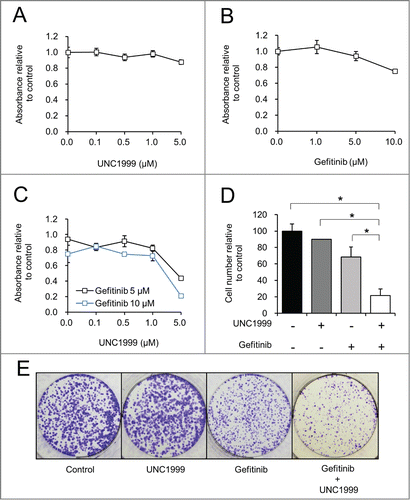
Figure 6. UNC1999 enhances gefitinib-induced autophagy and apoptosis in HT-29 cells. HT-29 cells were treated with DMSO, 1 μM UNC1999, gefitinib (5 μM or 10 μM), or a combination of UNC1999 + gefitinib, and then collected after (A) 24 hours, or (B) 72 hours.
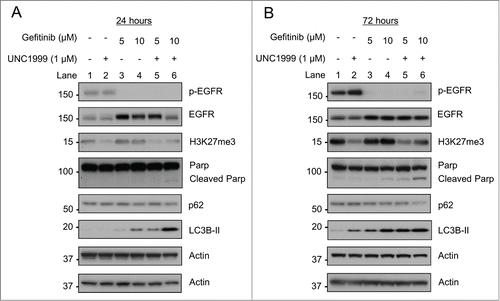
Figure 7. EZH2 inhibition with UNC1999 or EZH2 shRNA knockdown increases autophagy. (A) HT-29 cells transfected with GFP-LC3B were treated for 48 hours with DMSO, 1 μM UNC1999, 10 μM gefitinib, or a combination of 1 μM UNC1999 + 10 μM gefitinib, then fixed and mounted with DAPI. 200× images. (B) HT-29 cells were transfected with Vector or EZH2 shRNAs. EZH2 western blotting was performed after puromycin selection.
